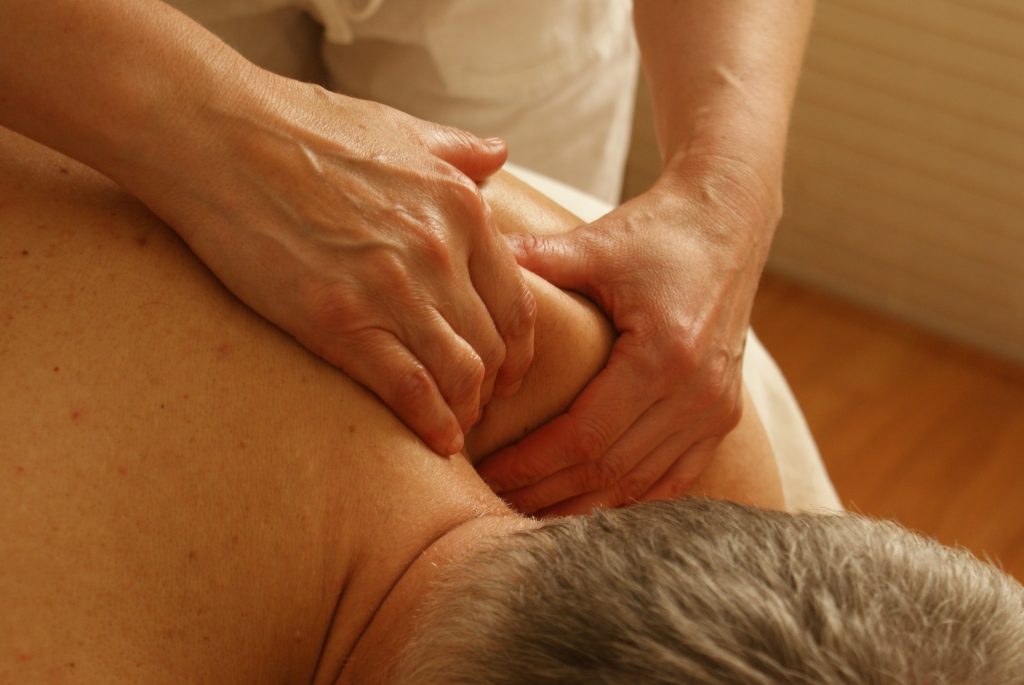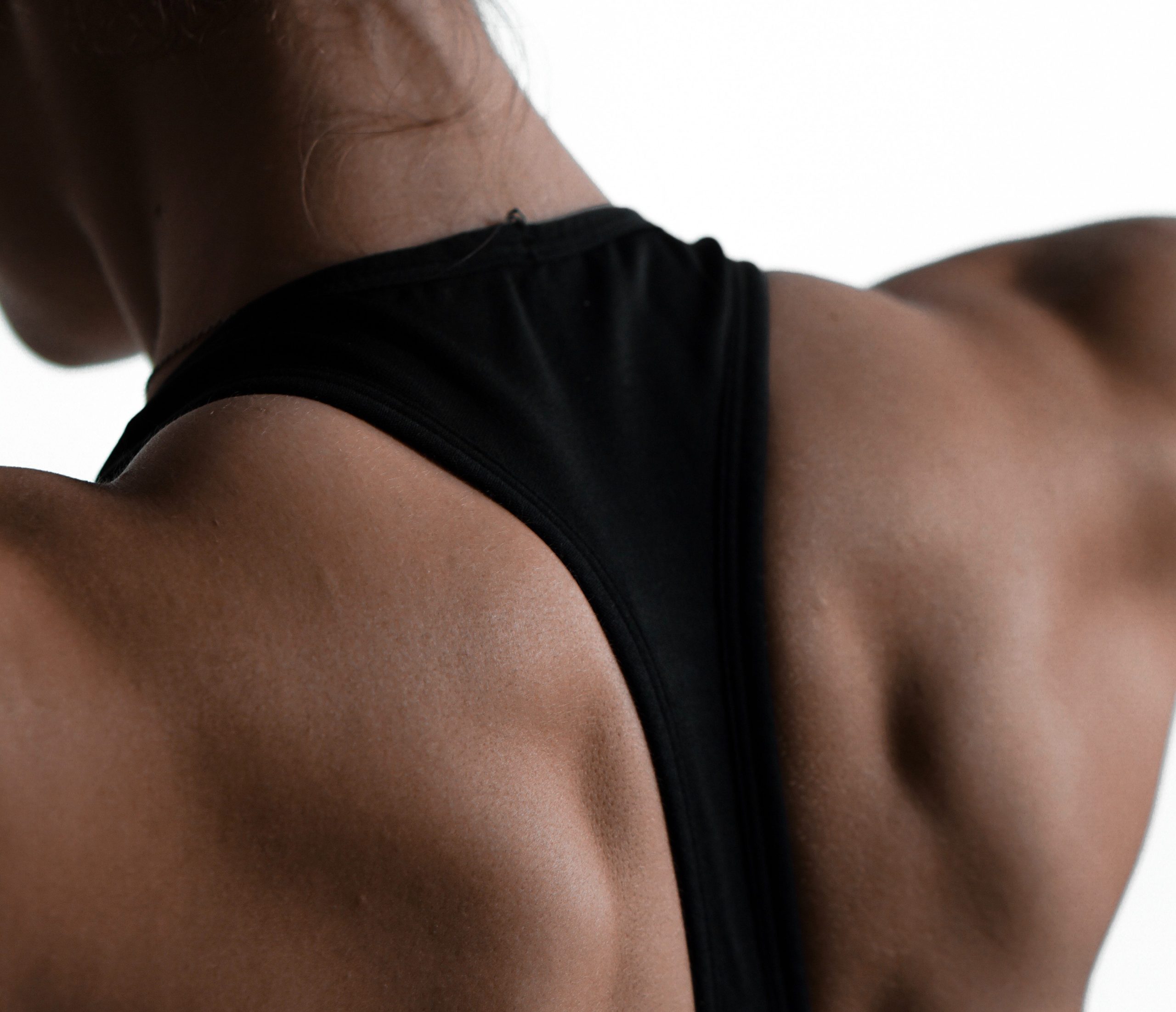Whilst most shoulder dislocations are a result of trauma (an injury), some people also experience episodes of instability without having injured themselves. As physios, its important for us to work out why such instability has occurred. Here we explain a bit more about Atraumatic shoulder instability.
Basically atraumatic instability is instability of the shoulder i.e. dislocation, without a trauma. Done.
Well, not quite…
The majority of people who suffer from this will have a combination of underlying laxity in the ligaments and the joint capsule, and reduced muscle strength and control. Causes can vary from repetitive movements that create some micro trauma to the joint capsule, for example, in sports where there is a lot of throwing or overhead activity or where the joint is forced into extreme rotation, like gymnastics. This kind of activity loosens the capsular restraints.
Other causes can be our genetics, our development or some studies have even shown some psychological causes are possible.
WHO IS AFFECTED?
This condition is primarily seen in the younger person – those under the age of 25. As mentioned, there will be no clear history of injury but there may have been something slight that started it all off. A person may be higher on the hypermobility scale, there may be a history of subluxations or dislocations. In someone suffering with atraumatic instability, we’d expect to see evidence of pain, particularly at the front of the shoulder and there may be fear around moving or performing tasks with the shoulder.
WHAT CAN WE DO ABOUT IT?
There are some cases that will need to be referred into a specialist shoulder unit, and some that will need surgery. However, once abnormal muscle patterning has developed, amongst other life stresses, surgery can sometimes result in a poorer outcome. But should that be the case, your physio and shoulder doctor will discuss the options with you.
The good news is, a large number of people will be able to recover and manage with physiotherapy and rehabilitation and this should be the first port of call. Having a good, structured rehabilitation programme, which factors in all muscle function, pain and any psychological factors such as fear and anxiety about moving the shoulder (1) is key. Then being consistent with your rehab is vital as some studies suggest that it takes a high level of compliance and commitment to achieve results…and most of these studies took place over 12-24 weeks, so it takes a long time and is not easy (2, 3, 4).
There are many different routes for rehabilitation to follow and many different exercises that can be done. It will depend on individual assessment as to where the focus may be. This will usually involve working on the muscles that control the scapula (shoulder blade), the muscles that act on the humerus (upper arm) and the muscles that control the shoulder joint itself.
The below are just a few examples of the sort of thing you might be doing at each stage.

STAGE 1:
In this stage we are trying to reduce pain, fear and avoidance of movement and any associated anxieties which are common place and natural emotional reactions to shoulder instability. It is important in this stage to find a ‘safe zone’ which is a range where you feel comfortable to move the arm, so that we can begin to get some activation of the muscles.
To encourage this, a good place to start is with what we call ‘closed chain exercises’ where we can get some load through the arm but on a stable surface. This allows us to work on joint stability, proprioception and some co-contraction of the muscles. In this stage I would also start to introduce some isometric (static) contractions of the rotator cuff.
Here, we are not as worried about hitting specific sets and reps but working from 30-60 secs for 3-4 times is a good place to start with the focus on building confidence.
Here are some examples of the kinds of exercises we would generally recommend during Stage 1 of recovery:
1. 4 point kneeling weight shift – watch the video here.
2. 4 point Progression – watch the video here.
3. Isometric External Rotation – watch the video here.
STAGE 2:
In Stage 2, we are aiming to introduce some weighted movement to start to build some strength and endurance. It’s best to work with pain, effort and fatigue when defining sets and reps which means work to fatigue with what you can manage. This will normally equate 3-4 sets of 12-20 repetitions as we look to build control and stability.
Here are some examples of Stage 2 exercises:
1. Side lying external rotation – watch the video here.
2. Prone external rotation – watch the video here.
3. Prone Horizontal abduction – watch the video here.
STAGE 3:
During Stage 3, we’re looking to put different movements together and tap into the rest of the body’s kinetic chain.
Examples may include the following:
1. Flexion with external rotation – watch the video here.
2. Lunge with resistance – watch the video here.
3. Ball rotations – watch the video here.
STAGE 4:
In Stage 4, we want to add some dynamic movement, working some of what we call our ‘stretch shortening cycles’ as you start to progress back to your normal activities and/or sport.
1. Throwing and catching – watch the video here.
2. Drop and catch – watch the video here.
The general rule should be that if there is positive progress at 12 weeks, a patient should persist with the rehab programme for another 3-6 months. If at 12 weeks no progress has been made then it is probably time to explore other options.
Here’s our summary:
- Physio is first line of management for atraumatic instability. It’s a long process and it’s hard work. Be consistent and stick with it. You will get there.
- The entire process needs to be a joint decision-making process with you, your shoulder consultant and your physio.
- If you’re not improving, then referral on to a shoulder consultant will be necessary. Some people will need a direct referral depending on certain criteria (as discussed above).
- Build confidence, stability, control and then add the fun stuff.
If you’re struggling with shoulder pain, get in touch for an appointment with one of our skilled and experienced physiotherapists. We look forward to seeing you soon!






